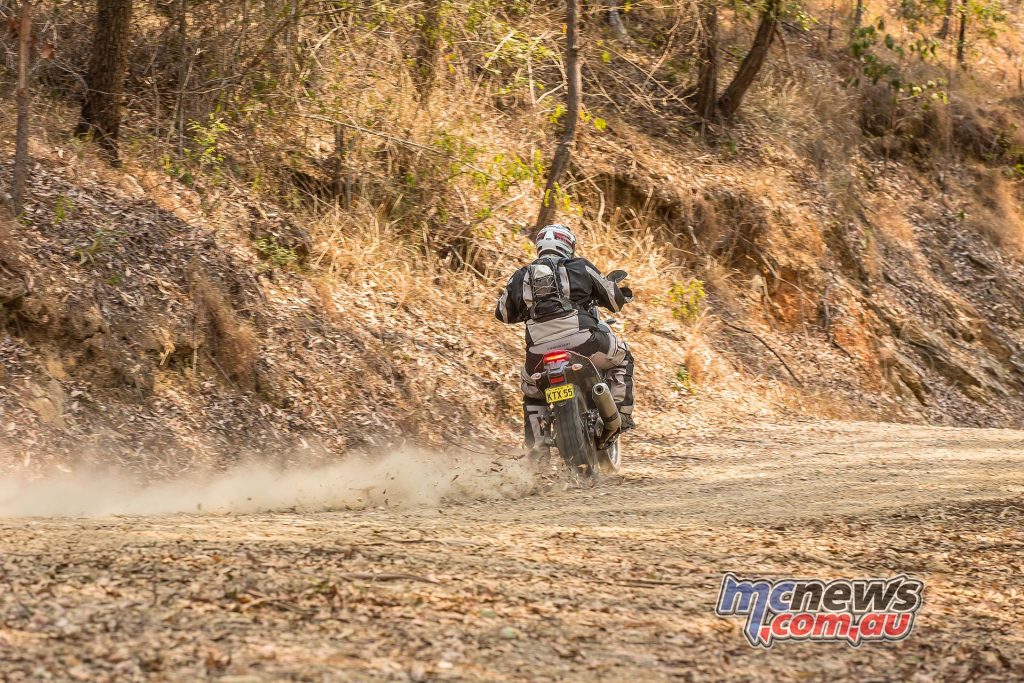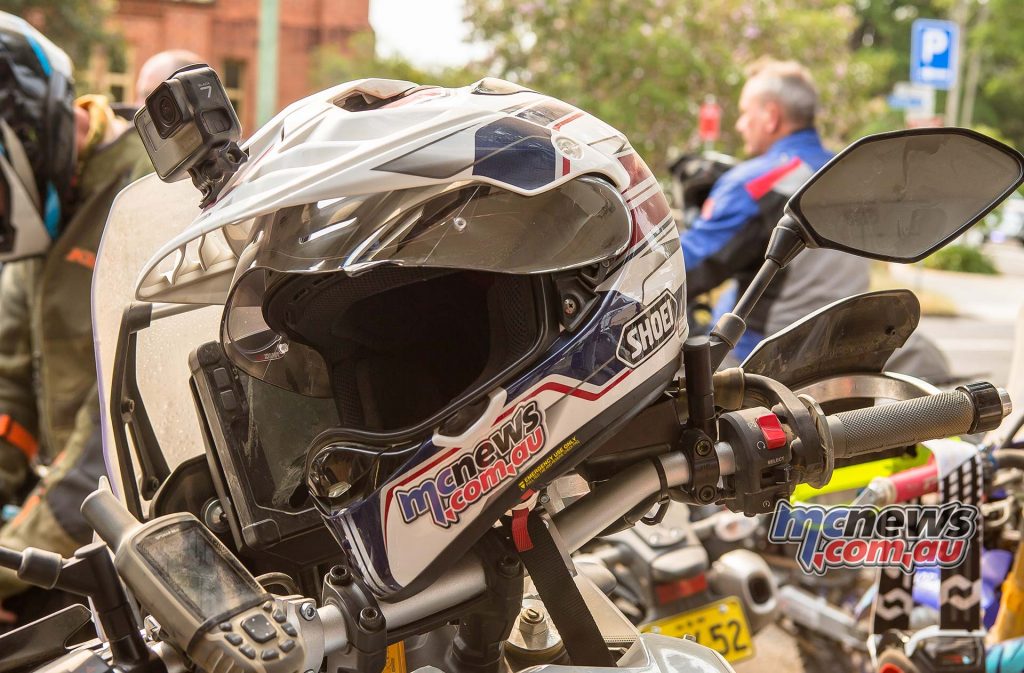Yamaha Tenere 700 Review
Motorcycle Test by Trevor Hedge – Images by iKap
After one of the longest public gestation periods in motorcycling history, Yamaha’s eagerly awaited XT700 Tenere is now starting to hit the floors in showrooms.
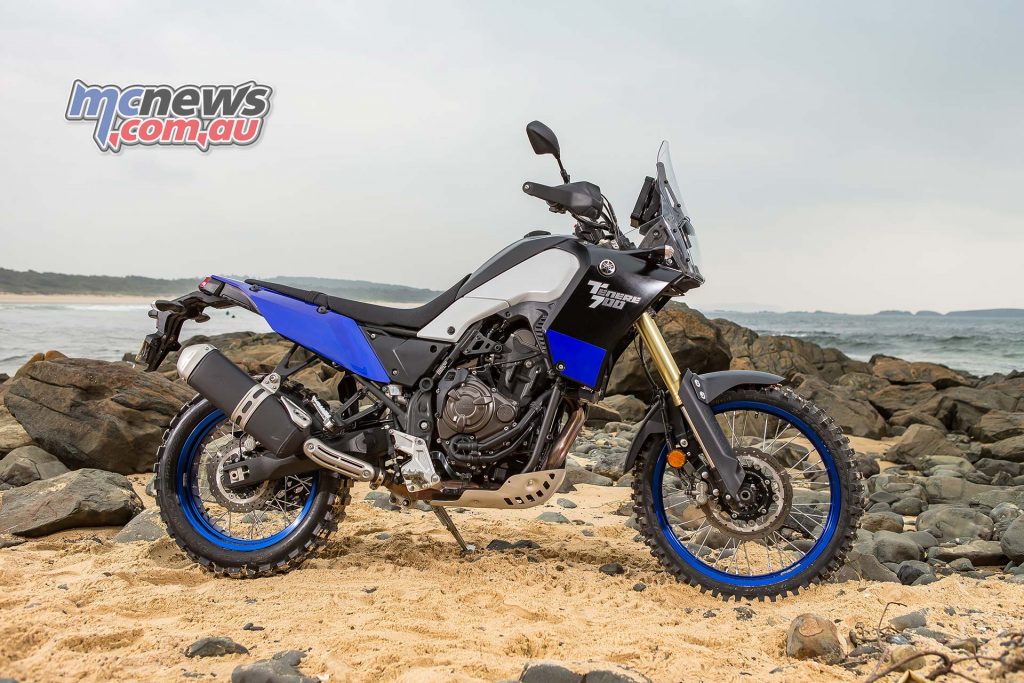
It is interesting to compare the approaches of European manufacturers and Japanese brands when it comes to adventure bikes. The likes of KTM, Triumph, Ducati and BMW throw every bit of technology and about the broadest feature list seen on any class of motorcycle at their adventure bikes.
Despite having a wide variety of technology available in their wider line-up, Japanese brands take the opposite approach, deliberately keeping their adventure bikes relatively spartan when it comes to kit. Suzuki’s V-Strom has been marching on largely unchanged for a long time while, despite the optional DCT gearbox, Honda also took a fairly low-spec’ approach when they first introduced the CRF1000L Africa Twin. Both Suzuki and Honda are putting a bit more standard kit on their adventure offerings for the coming 2020 models, but still, nothing like the endless list of tech’ and big horsepower boasted by the European manufacturers is currently available from a Japanese brand.
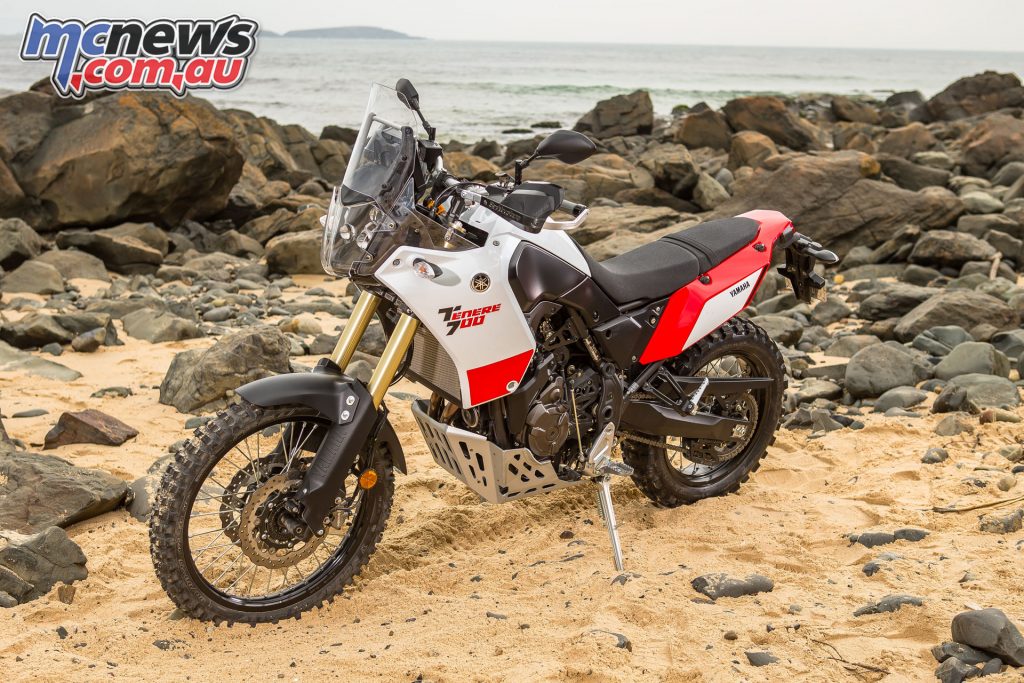
Now Yamaha have perhaps gone the most basic of all with the new XT700 Tenere. No traction control, no cruise control, no tyre pressure monitoring, no electronic suspension, no riding modes, no quick-shifter or slipper clutch, no heated grips…
Obviously Yamaha are reckoning that less can be more in the bush, and that their reputation for producing reliable and bullet-proof motorcycles at a very competitive price point will be what makes for sales success.
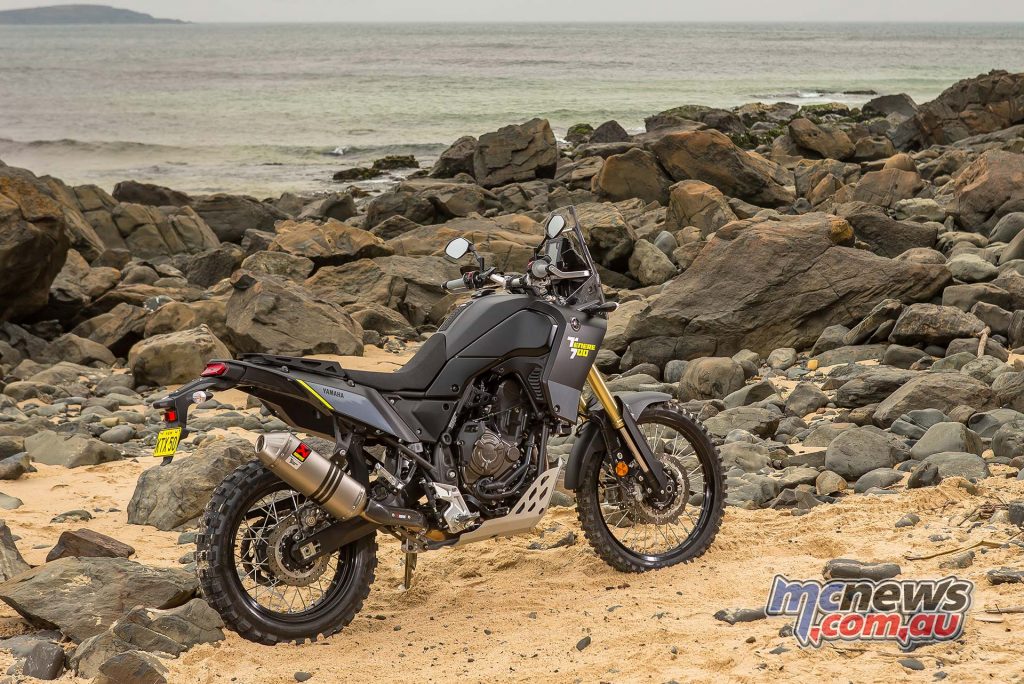
Early indications are they may be right…
Yamaha had already sold over 350 of the bikes well before they arrived and any new customers putting a deposit down are now likely to have wait until February before they can ride off into the sunset on their new beast.
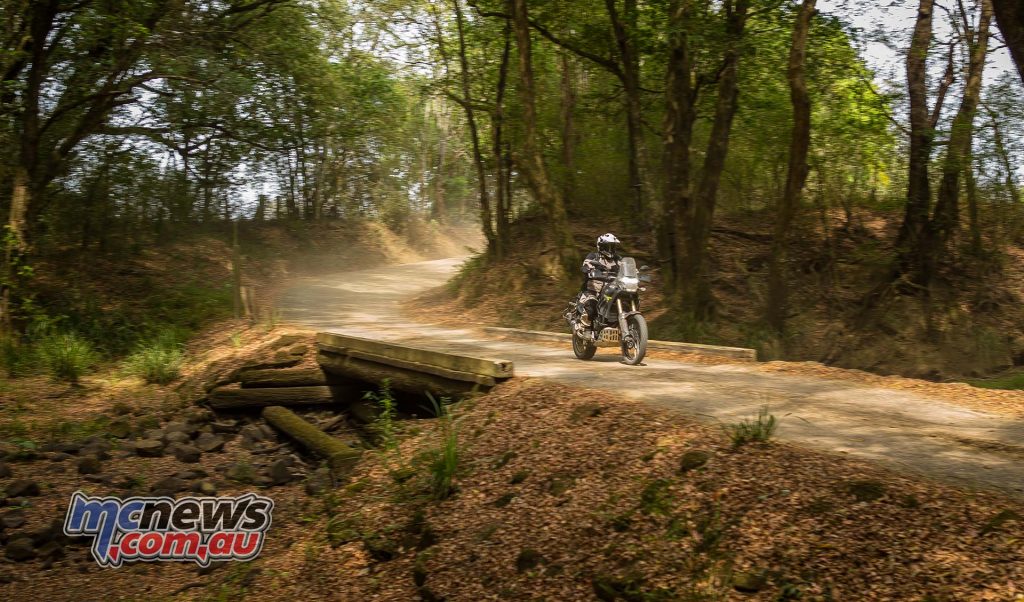
Most of the press got two days on the bike, but I enjoyed a full five days and almost 2000 predominantly off-road kilometres on the motorcycle. I was glad to have that extended opportunity to really gel with the bike which allowed me to gain a proper insight in to what a buyer can expect to experience if taking one home for good.
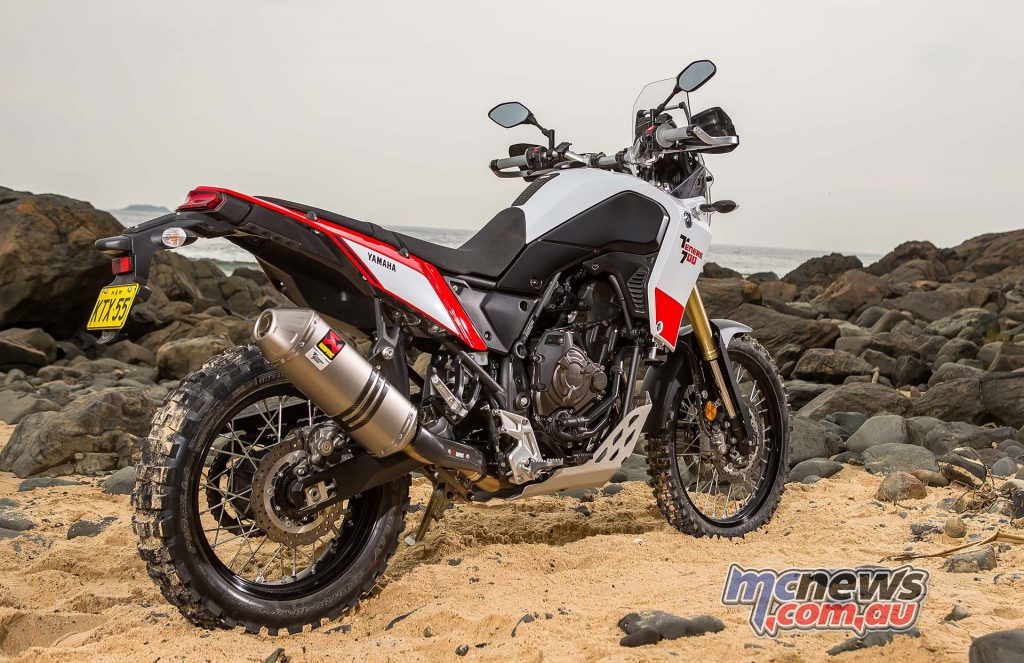
While most of the off-road riding was not overly technical in nature, we did get a few little special tests thrown in to sample the machine in terrain that the more adventurous motorcyclist might negotiate from time to time during their travels. A lot of these later in the week were in situations where it was not feasible to have a photographer stationed due to time constraints etc. so as for the rutted out twin-track and rocky ascents you will just have to take my word for it. Plus, it was damn hot and I just wanted to ride the bike to get to the beer at the other end!
The bikes also fared very well and kept their cool despite ambient temperatures on most days rarely dipping below 35-degrees celsius. This water play in the cover shot at the top might look nice and refreshing but it was actually 39-degrees down there in that river and cooking!
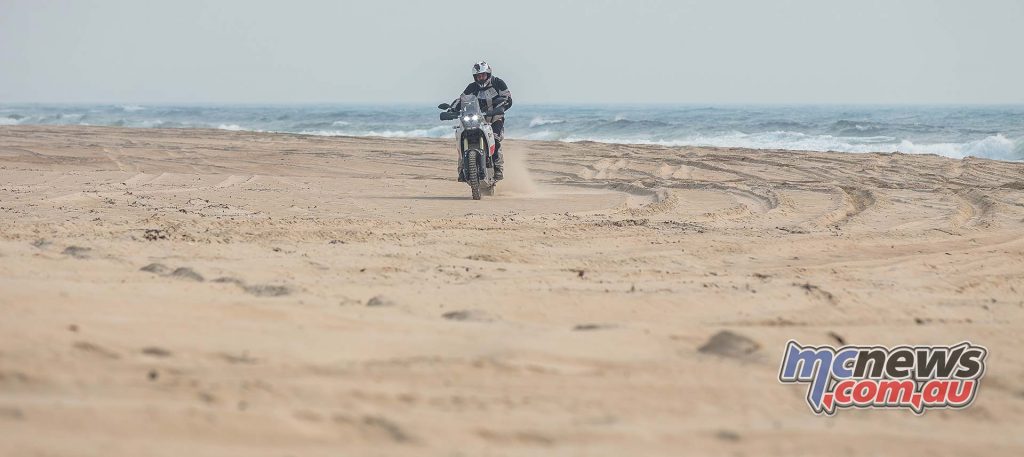
A short play on the beach early on day one saw me not get too carried away as it was already warming up. My fitness levels are not as good as they once were, which had me playing the long game and conserving energy where possible, so I had plenty in the bag for when it was really needed. At the end of the week I actually had fewer aches and pains than what I had started it with! Which must be a great testament to the Tenere 700, while serving as a stark reminder how unhealthy riding a computer is!
The ergonomics on the Tenere 700 were, for me, pretty much spot on. The bend of the leg felt completely neutral and comfortable for my 178 cm frame. There seems to be an almost endless amount of leg-room available while seated for seven-footers let along six-footers.
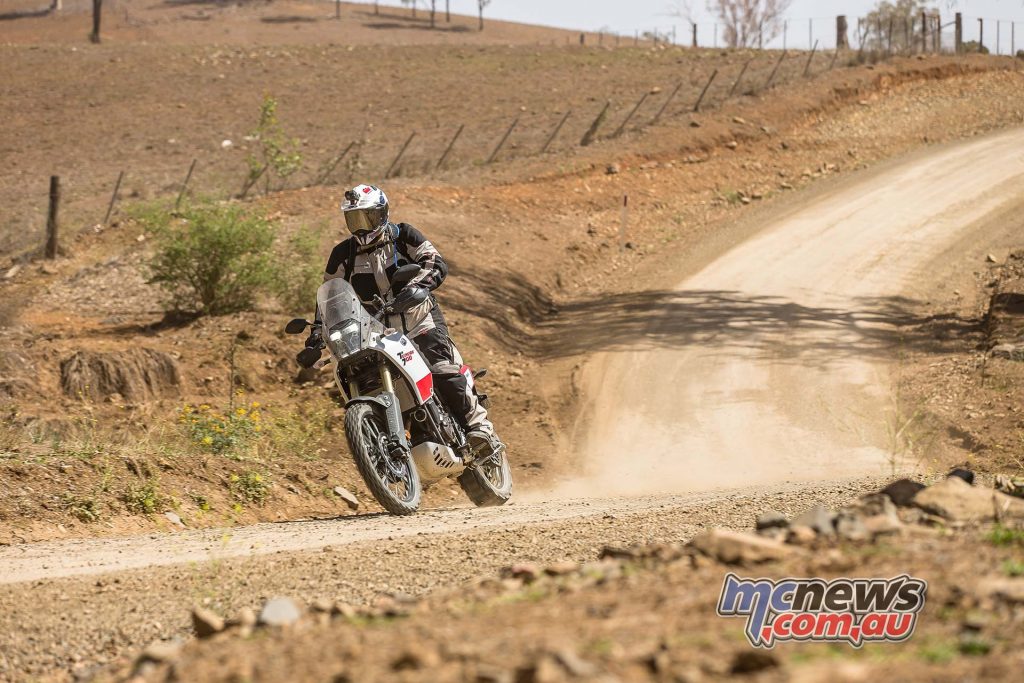
Seated or standing the riding position worked well for me. Those that always ride up on the pegs simply rotated the bars away a little further to change the reach and with it the angle of the levers. The standard brake lever is adjustable for span while the non-hydraulic clutch lever is not. I rode a few different spec’ bikes kitted out with various options and while the standard levers work well enough, I would fork over the coin for the very trick optional levers ($188 for the brake and $151 for the clutch), in the Yamaha catalogue. I loved them. Just make sure you get some Barkbusters to protect them while you are at it.
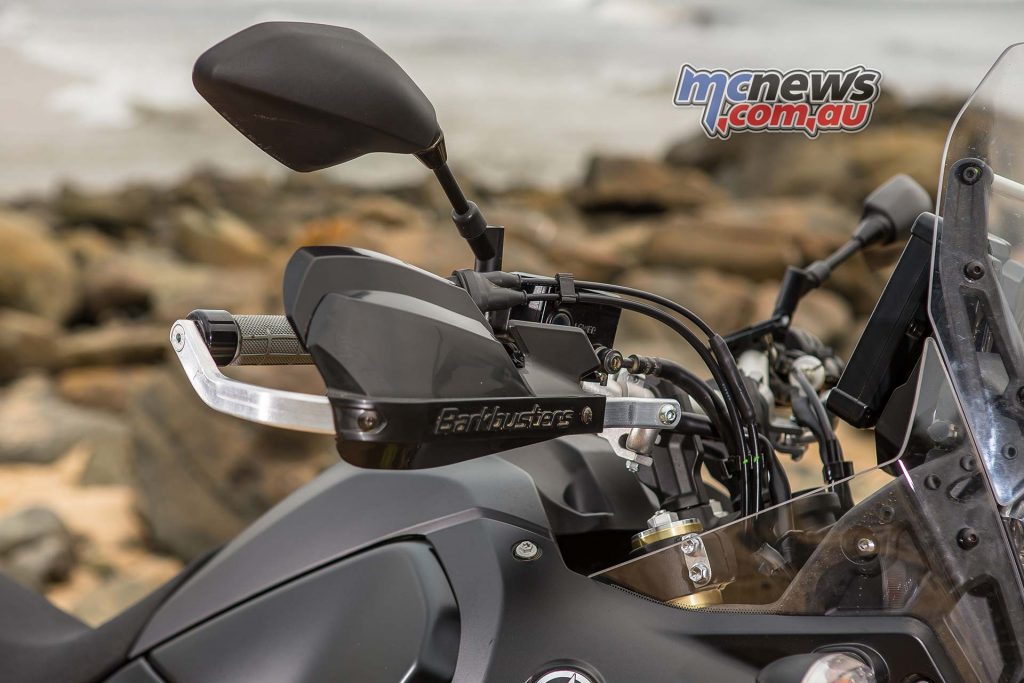
The seat is slim and extends a long way up the bike but does not go quite as far towards the head-stem as you would see on pukka dirt-squirters. Thus really hard-core riders coming from an off-road competition background might prefer something that extends a little further forward, but for the other 99 per cent of us the slight ‘sit-in’ nature of the Tenere 700’s pew is perfectly amenable in every scenario.
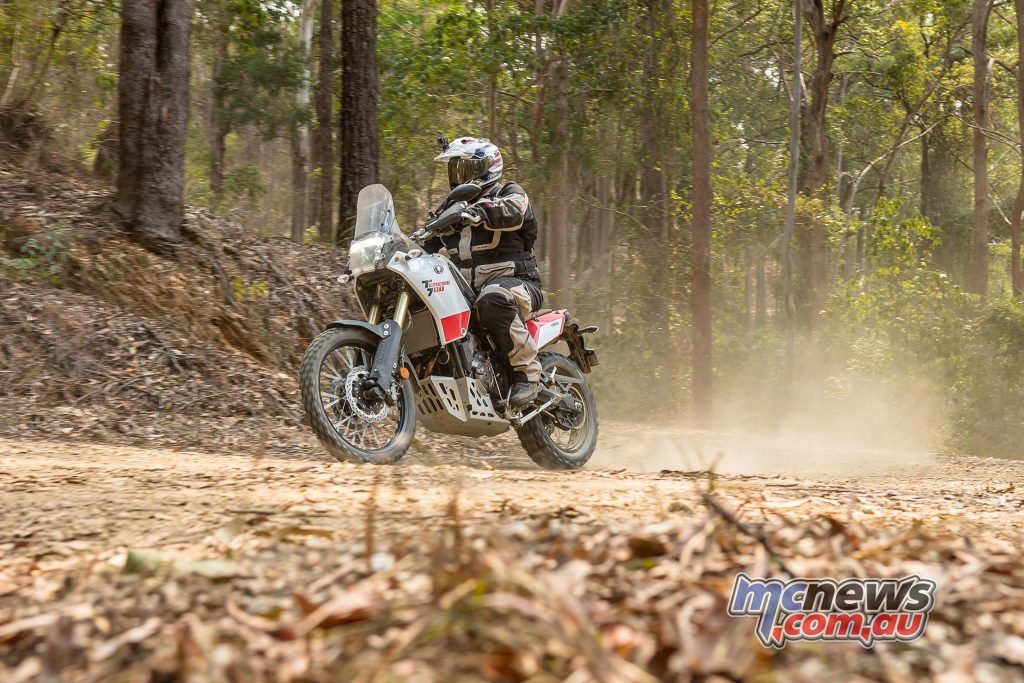
The standard seat height is 870 mm but the narrow mid-section of the bike and relatively flat seat make it easy to throw a leg over. An optional lower seat reduces it a little further to 863 mm and for those who are really short of leg and want the machine as low as possible Yamaha offer a lowering link that positions the perch at 845 mm. This would really be an option of last resort as suspension performance is sure to be compromised slightly when changing the linkage.
A rally seat is another option and one that could be quite handy for adventurers. It replaces the standard dual-seats with a flatter and narrower single piece seat with more grip on the sides. Another unexpected advantage of the rally seat is that it makes removing the whole seat unit a simpler process. With a turn of the key the whole seat pops off, while with the standard set-up the rear pillion seat pops off with the key, but a supplied allen key is then required to remove the rider’s seat.
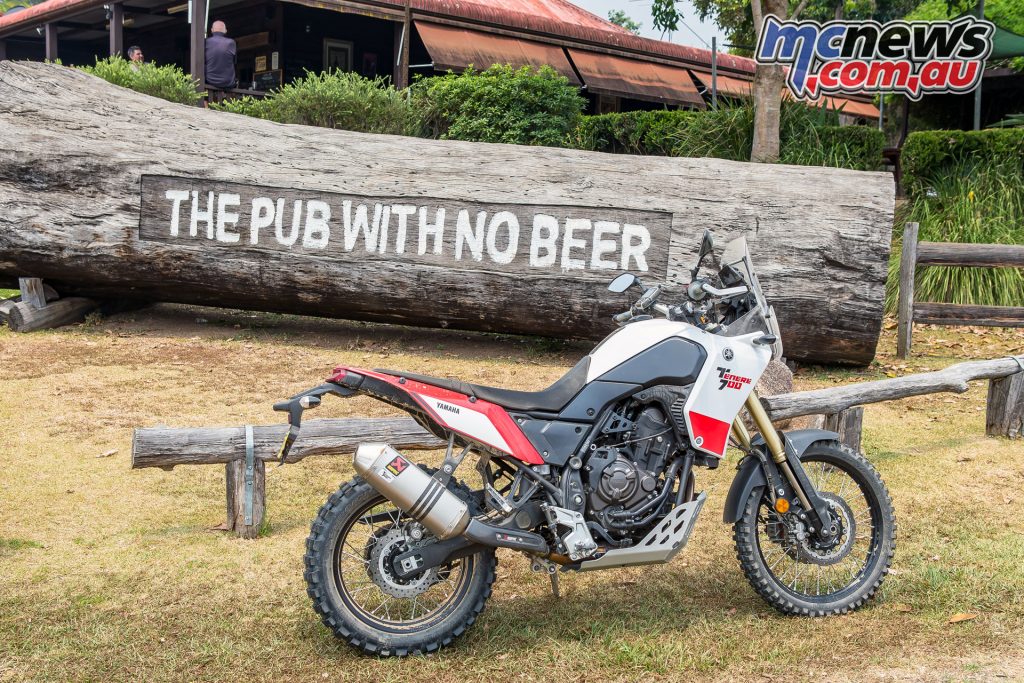
After long hours in the saddle the seat had started to gnaw at my bum a little on the first couple of days but then I adapted and toughened up a little, and was actually finding it more amenable as the week progressed. Don’t expect it to be 1000 kilometres a day on the tar comfortable, but it is more comfortable than something like a standard DR650 seat, or much else that is this capable on the dirt.
And it is very capable.
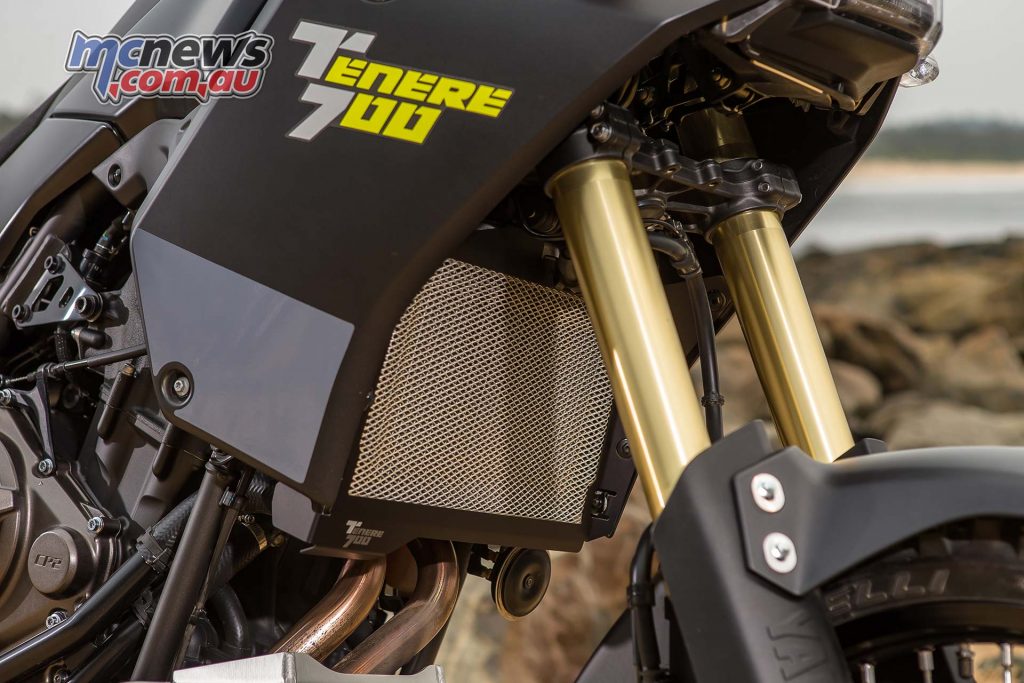
KYB provide the fully-adjustable forks and shock. The 43mm inverted forks are adjustable for compression and rebound damping while the piggyback shock has a handy wheel to dial in your pre-load.
There is 240 mm of ground clearance and the forks offer 210 mm of travel while the shock works through 200 mm. Dakar riders such as Rod Faggotter had an active role providing feedback to Yamaha’s chassis engineers late in the development cycle of the model and it shows.
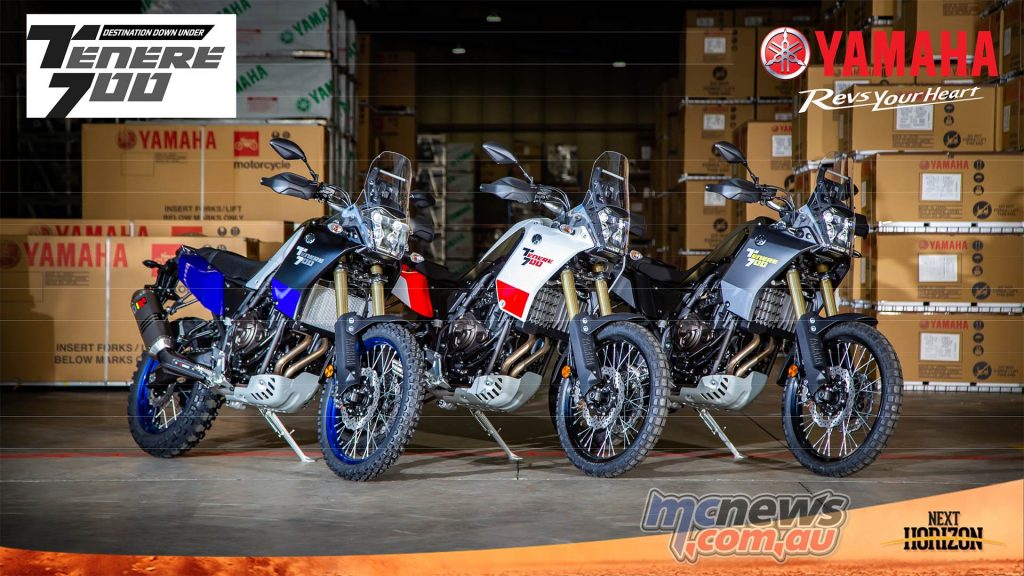
The suspension offers a good balance between all-round suppleness and hard-core capabilities. Those that want to get big air over erosion banks and hit things hard might want to firm things up at both ends beyond what is achievable via the quite large range of adjustment via the clickers. But even at my current weight I reckon I would just roll with the standard set-up for the most part, unless I really wanted to start to push the envelope and was riding the bike predominantly off-road and regularly hitting things hard in anger. More travel would be nice for those that really like to ride consistently hard off-road, but the large reservoir on the shock helps to prevent fade and ensured consistent performance long after I had started to fade…
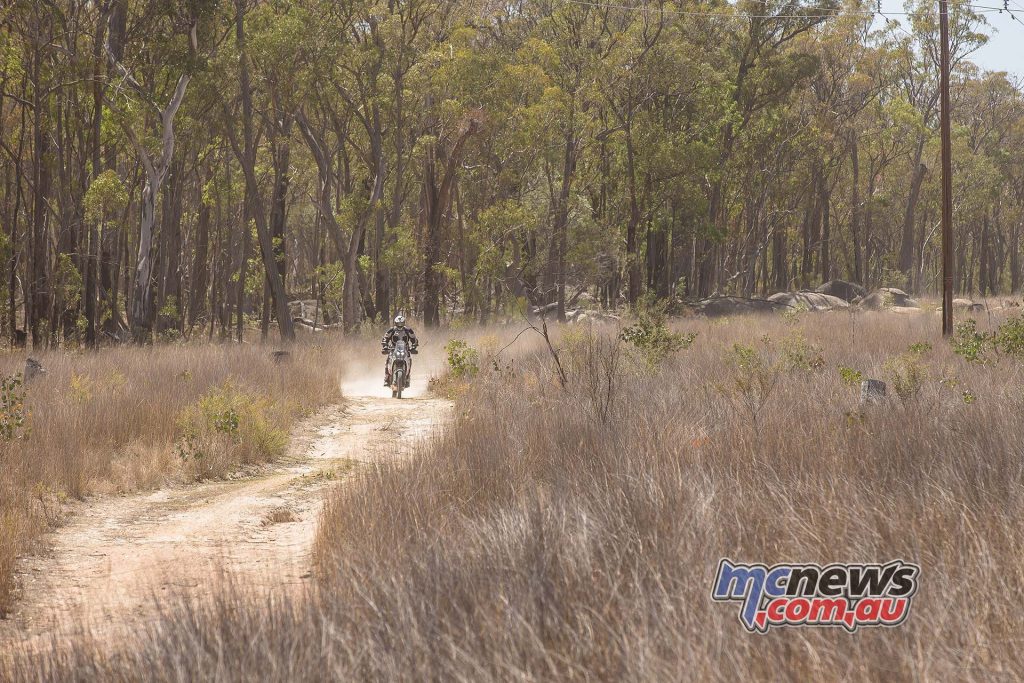
When the going gets rough a 21-inch front is always a massive asset and one that the Tenere puts to good use. The rims proved strong during the test but require tubes and are not tubeless ready.
The outright performance on the road during my time with the bike was always going to be compromised by the off-road specific Pirelli Scorpion Rally rubber, however, it did seem to work well enough when pushed to hint that on the road the Tenere 700 will cut a line well. I suspect it might prove a reasonable weapon on a tight and twisty back-road.
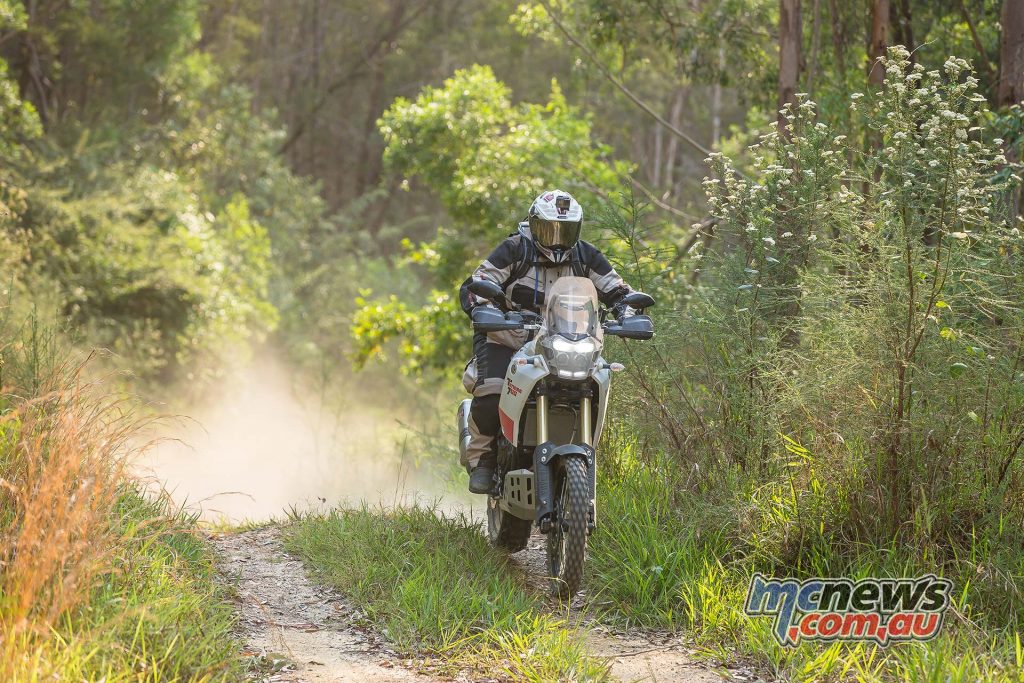
Will it feel underpowered on the road?
Depends on the road I guess… The engine is punchy and will almost get you to 200 km/h if you persist, but where it really shines is on the dirt.
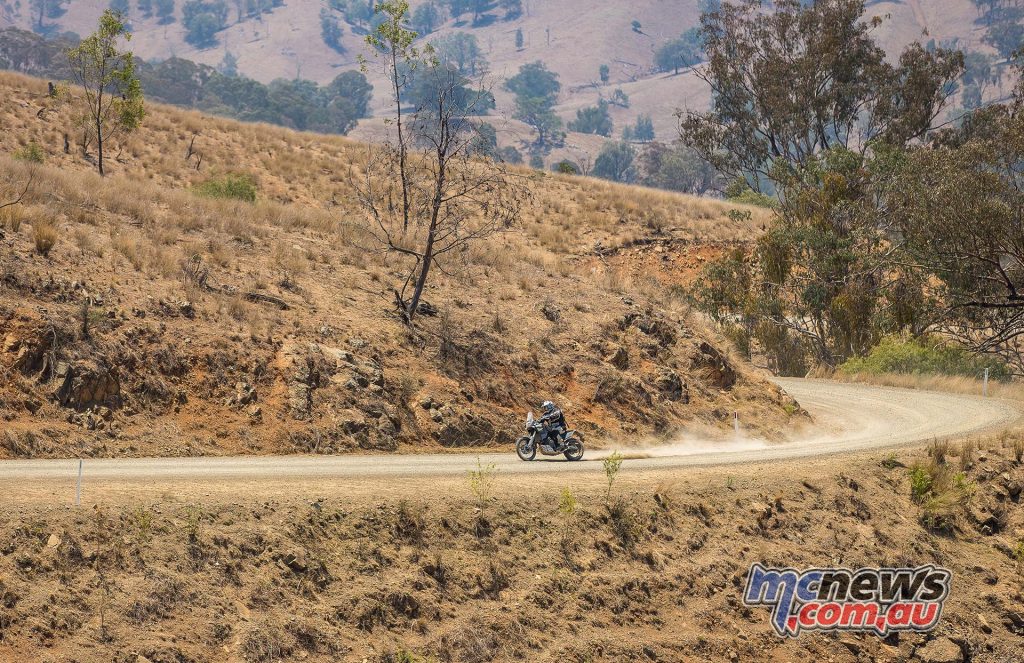
It really does pull well from down low, so much so that on the penultimate day I was really starting to revel in the bike through a seemingly endless series loose gravel based switchbacks. The surface had little grip but was consistent, a quick closure of the throttle was enough to have the back end of the Tenere breaking away under compression, before then transitioning into gentle throttle on the way out to continue the arc. Apex speeds were sometimes below 40 km/h but after initially playing in third gear, I then started to just slide from apex to apex in fourth. The dampened response off the bottom in the higher gear made it so playful and easy to control, which, along with a little weight shift on the pegs, had the bike just ever so slightly drifting from turn to turn. It was immensely satisfying and rewarding, fecken poetry is what it was.
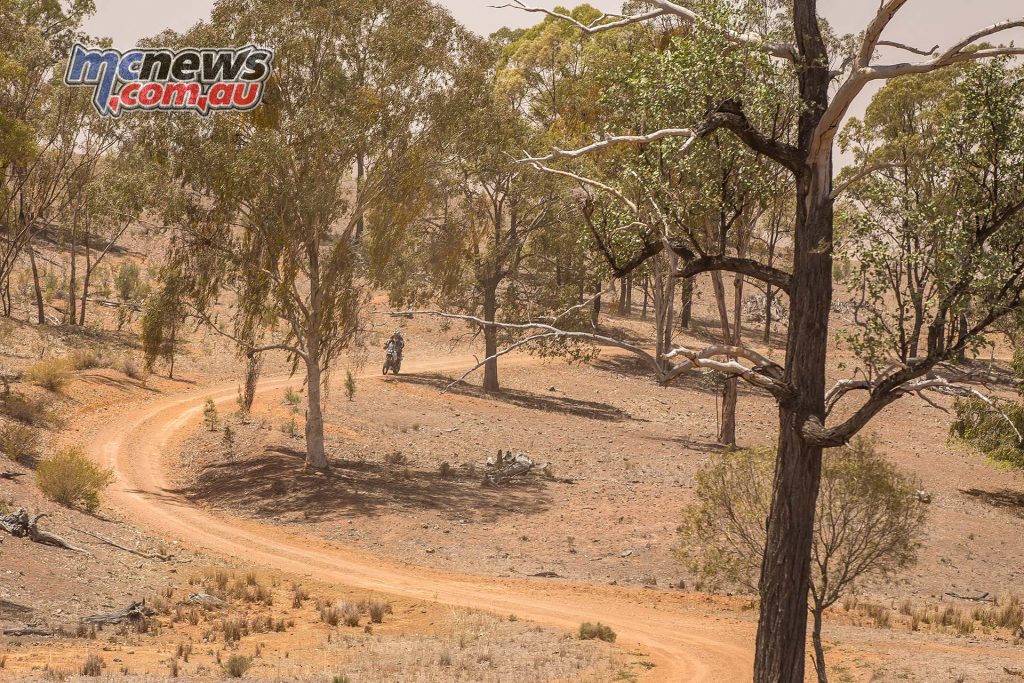
The engine is the well regarded 689 cc parallel twin that has been powering the MT-07 and XSR700 for the past few years. It breathes a little differently in XT700 guise due to a different air-box and exhaust but is virtually unchanged as a power unit from its road siblings. Australian and New Zealand delivered bikes have an oiled air-filter for better protection from dust ingress while overseas the bikes ship with a standard paper based filter.
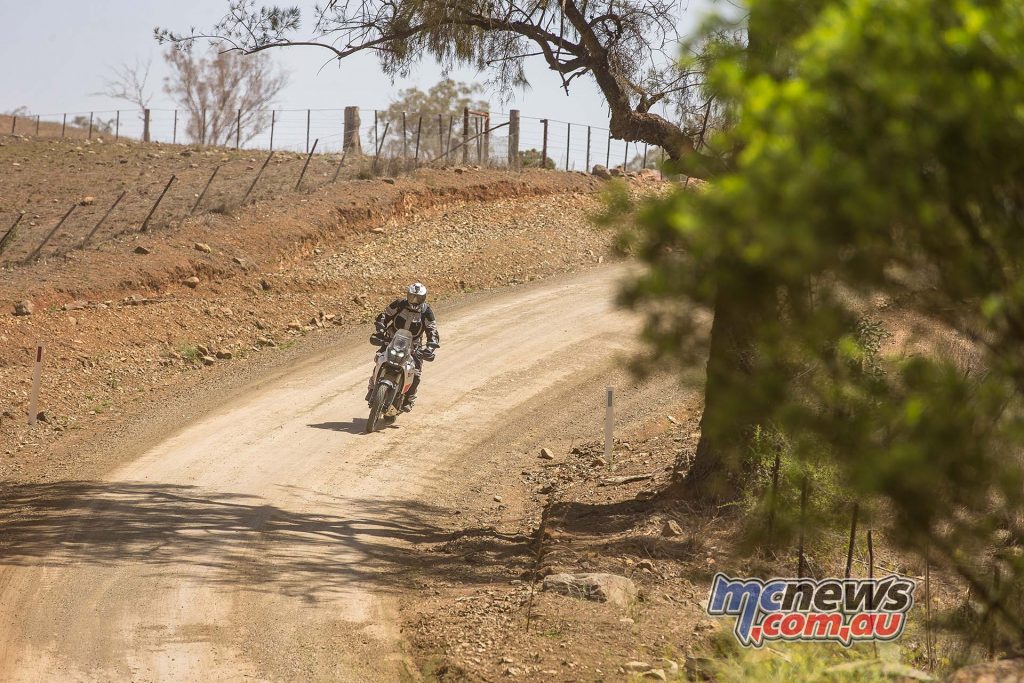
The numbers are 74 horsepower at 9000 rpm, and 68 Nm of torque at 6500 rpm. The engine is genuinely useful as low as 2500 rpm and there are no grumbles while lugging it around in the upper gears with the engine driving out of the basement. Of course there are no huge gobs of torque hitting the rear tyre in comparison to much larger and more powerful engines available, but I didn’t miss that massive grunt as much as I thought I would.
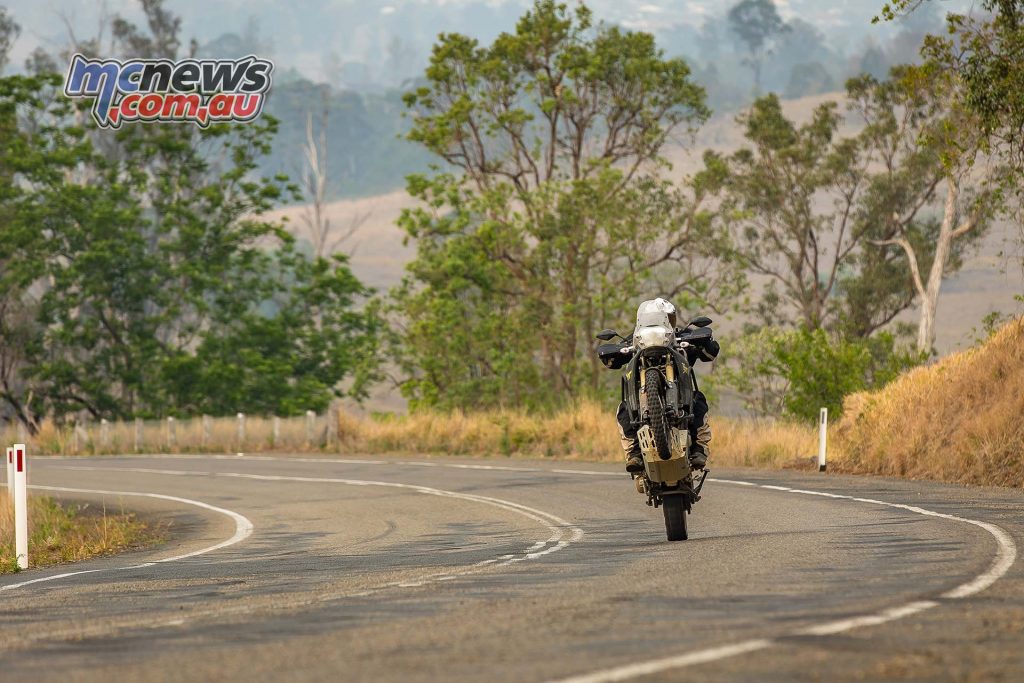
More power would have just had me doing more wheelies from higher speeds, and turning that rear 150/70-18 rear Pirelli into gello. The lighter weight and lesser power of the XT700 is going to translate into dramatically reduced rear tyre wear when shod with off-road rubber in comparison to big-bore adventure bikes and the engine has a proven track record for bullet-proof reliability.
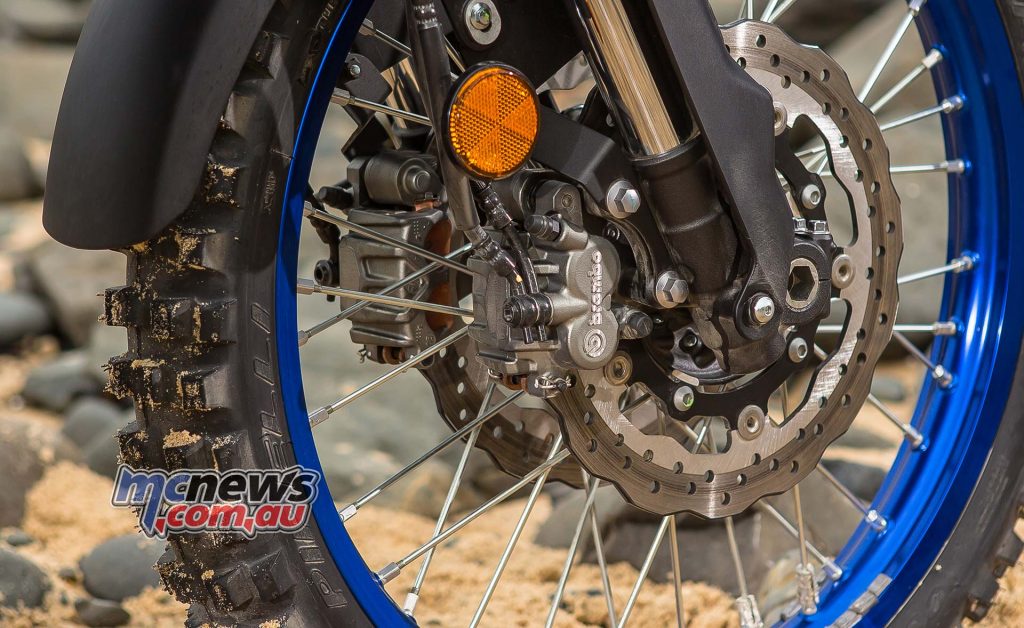
The brakes are Brembo front and rear and Yamaha have not skimped on the fit-out. A pair of 282 mm disc rotors up front and a 245 mm rear proved well up to the task of hauling up a fully fuelled 204 kilograms of Yamaha complete with a larger than the average bear test pilot on board. The control at the levers felt progressive and I have no complaints. The ABS system is switchable but is well tuned enough for it to be left on in most scenarios. I bucked the trend of the other testers and deliberately left the ABS on for much of the off-road work, to see how it fared, and the system was largely unobtrusive and cycled quick enough for it not to be a massive drawback. Loose shale descents or mud aside, many riders will still be safer off-road with it on rather than deactivated. ABS has come such a long way, I really do urge you to try these latest systems before dismissing them out of hand.
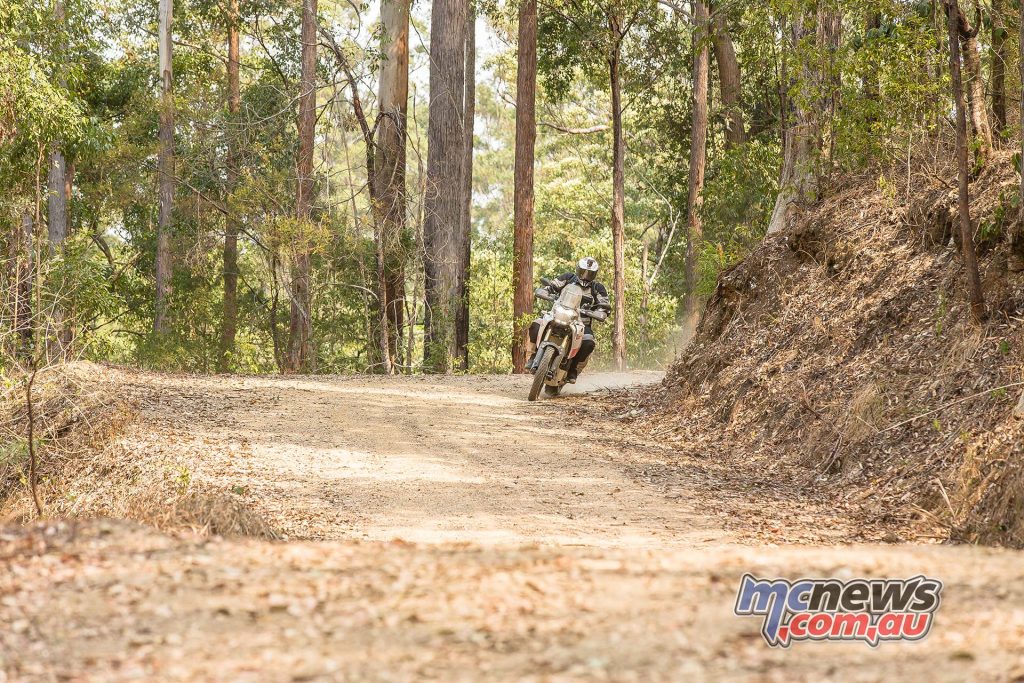
Yamaha offer a titanium Akrapovic slip-on muffler and while it looks tasty it doesn’t really give the bike any discernible increase in power. I believe it is rated at the same decibel level as the standard pipe, but it does add a little more timbre to its bark that is quite enjoyable, particularly when short-shifting in the tight stuff. That said, I would probably keep that $1149 in my pocket and spend it on other things. Save you crying when you dent it too….
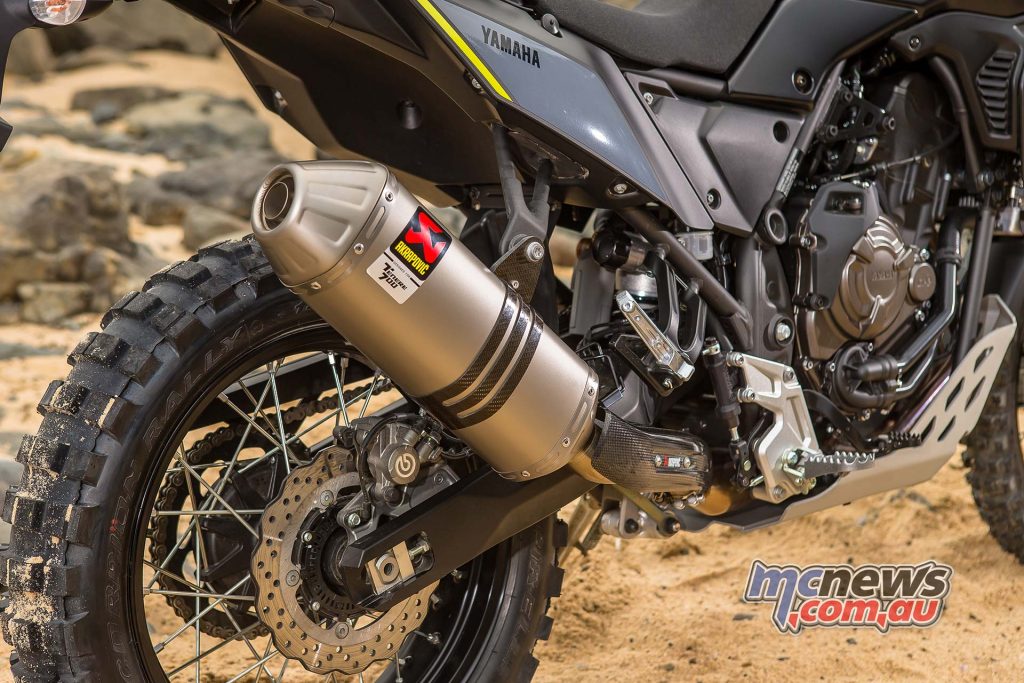
I do wish the XT700 had pannier mounts integrated into the rear sub-frame, so the optional hard panniers sat closer to the bike, but unfortunately racks are required to mount the hard luggage. Soft throw-overs will be the go. On the positive side of the ledger the XT700 does have some excellent and easily accessible tie-down points.
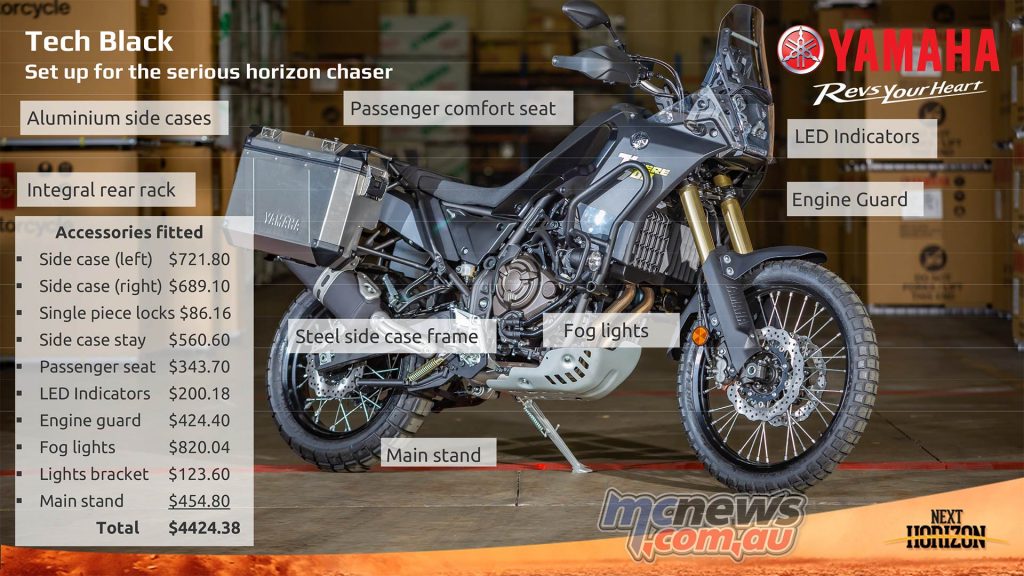
Yamaha have a full suite of protection ready to go in their accessories catalogue including radiator guard ($197), engine guard ($424), skid plate ($466) and headlight guard ($172.70) that would be wise investments.
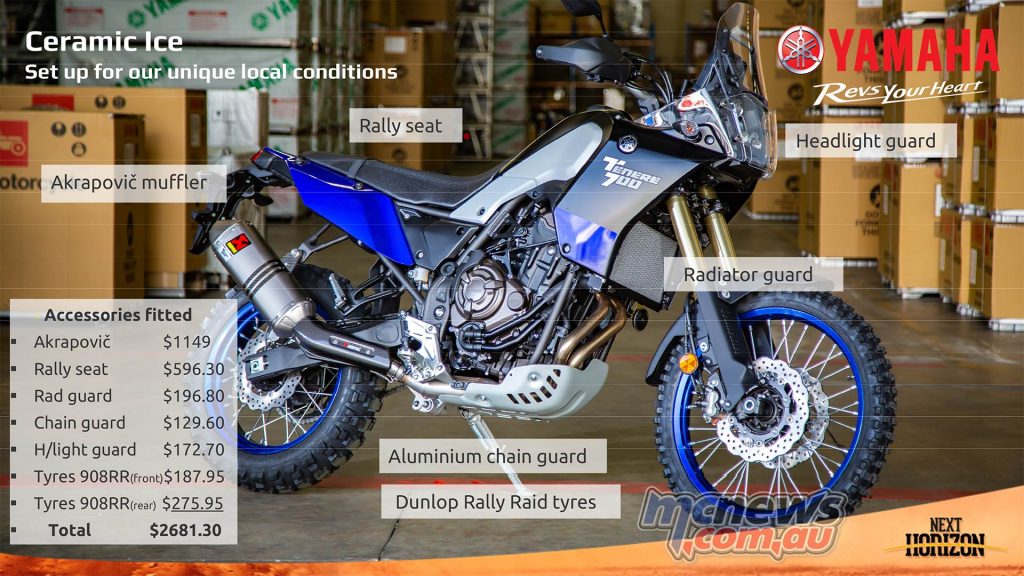
The stark four-eye look first seen on the T7 concept all those years ago has thankfully not been lost in translation from prototype to production line. It looks pukka desert rally raid. I am not yet in a position to comment as to its effectiveness as our riding was completed during the day.
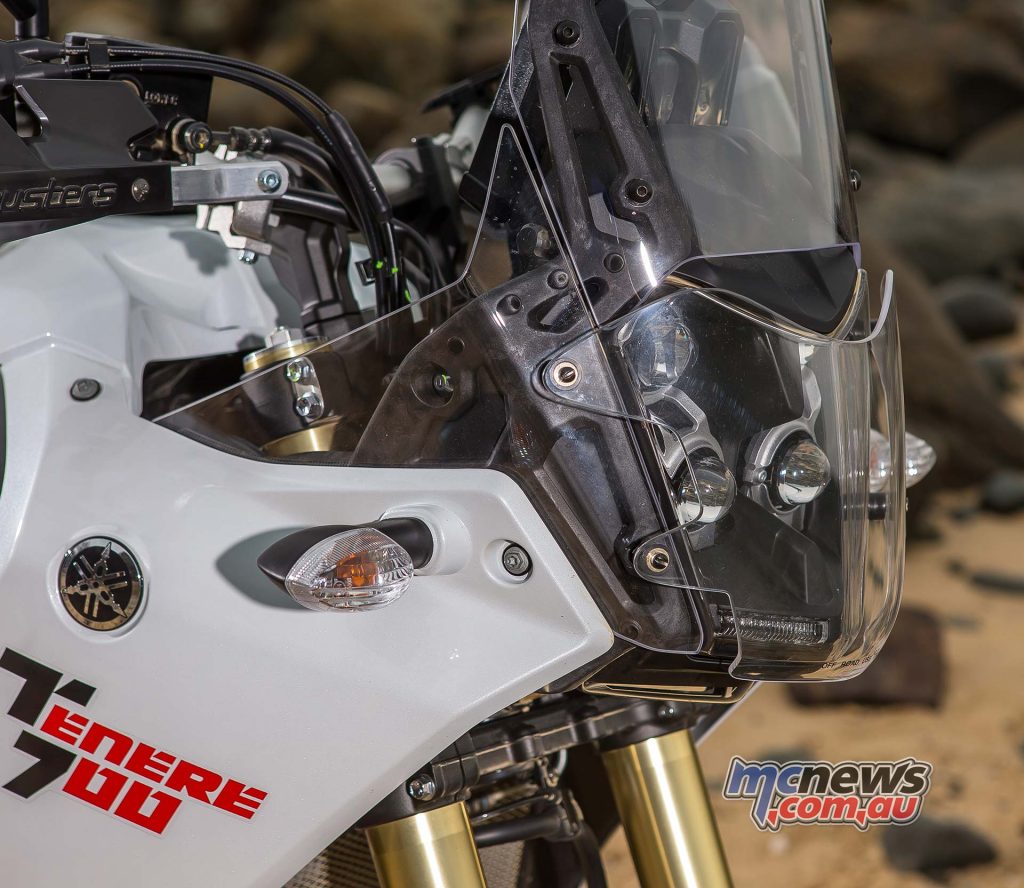
The rally style cockpit theme not only extends to the tall screen but an almost tablet style LCD is mounted on rubber blocks that help isolate it from vibration. One would imagine this would be primarily for longevity, but I did find that as the display was well forward of the windscreen that this made it somewhat more susceptible to dust covering the display. The screen is greyscale not colour, thus the dust quickly made it hard to read.
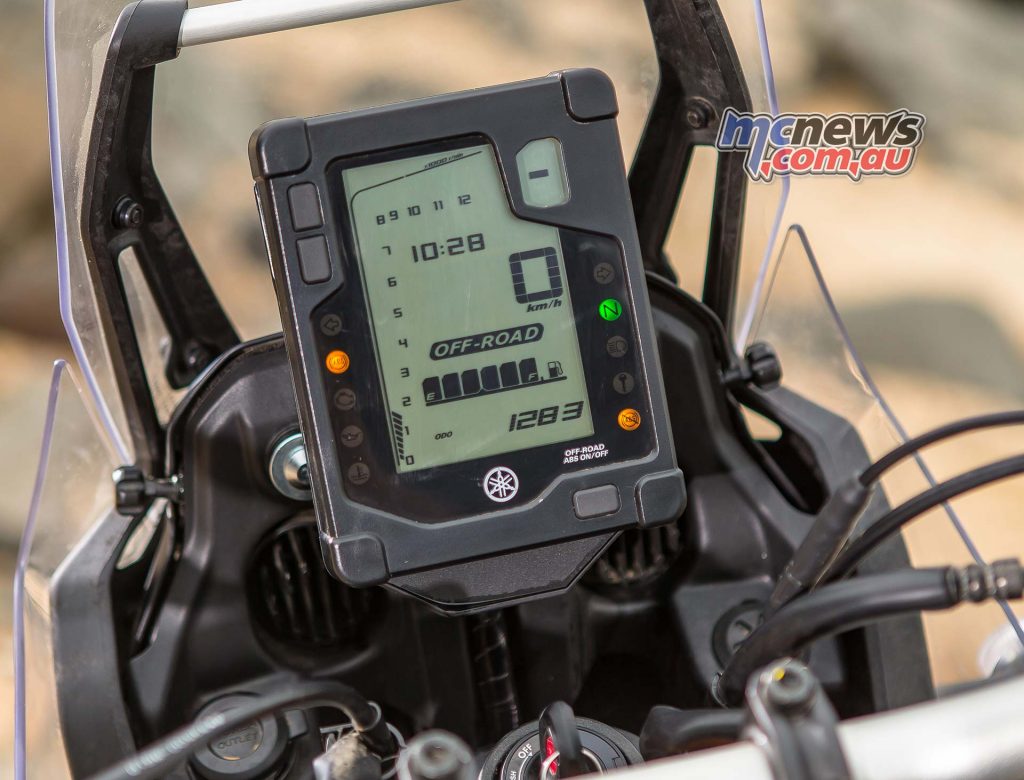
My primary bugbear though regards to the tripmeter functions. There is a fuel gauge that indicates the level remaining in the 16-litre tank, but by the time you get to the last bar you still have more than 100 kilometres of range remaining, then when the system deems itself as fuel critical and starts flashing, a trip counter then starts recording the further distance travelled. There is no indication of the range to empty. This is an annoying oversight in my opinion, and one I raised when questioning Yamaha’s project leader for the Tenere 700 in this interview (Link).
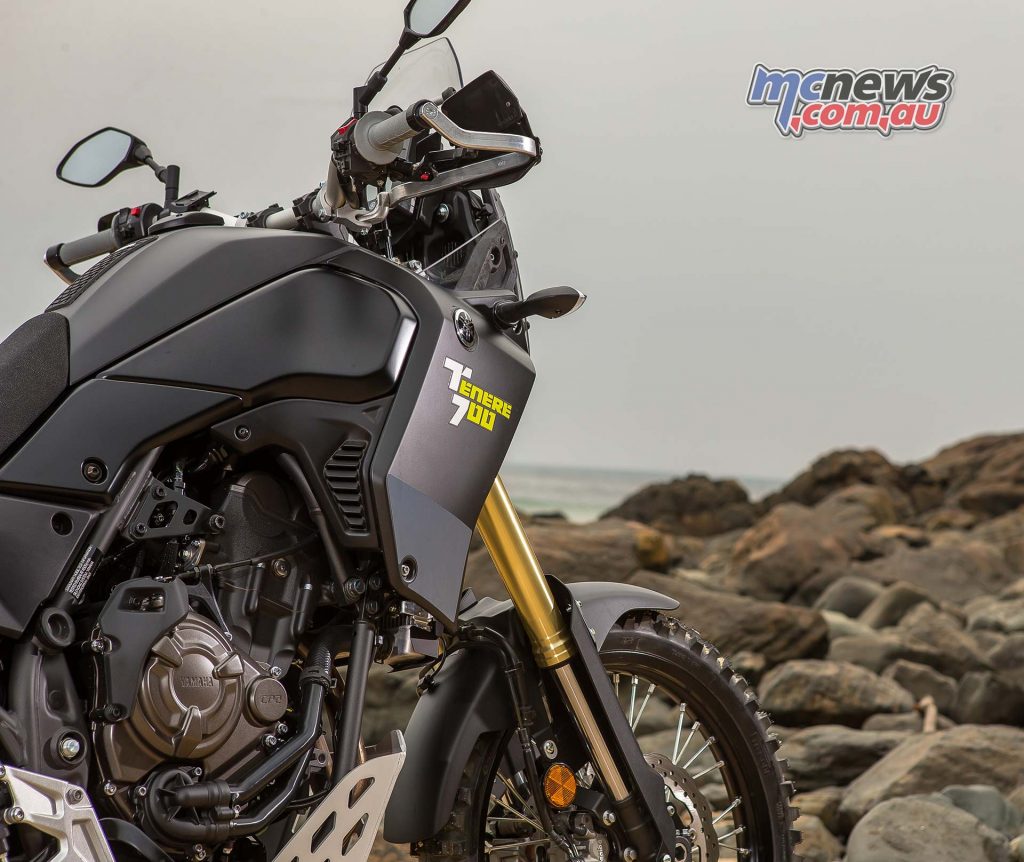
Yamaha claim a touring range of over 350 kilometres and while I think that is entirely doable, it would be much safer banking on a range to empty of around 300 kilometres when planning your routes.
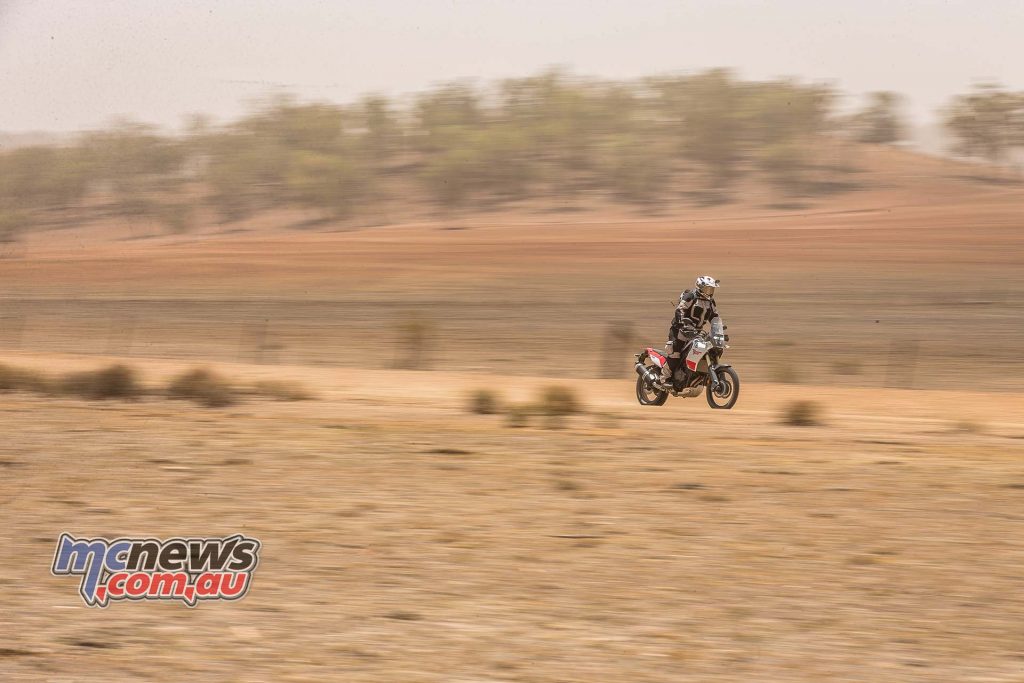
One rider broke a standard plastic hand-guard in a fall. Another had a side-stand spring go walk-about in rough terrain which required some trail smarts to secure the stand to prevent the side-stand switch cutting the ignition. While another rider suffered a rock impact with the side-stand switch. Thus this was the only real foible we discovered that might strand you on the trail and require some MacGyvering to get mobile again. We could have just got unlucky, like the time I witnessed three Fireblades on the launch of the 929 back in 2000 all end up with punctured radiators from stone damage. Still, it might pay to bypass the side-stand switch if you are heading out bush and take this possible point of failure out of the equation all together. The switch bypass is something that was generally done back in the day as a matter of course for off-road bikes when side-stand switches first started appearing on every motorcycle 25 years ago.
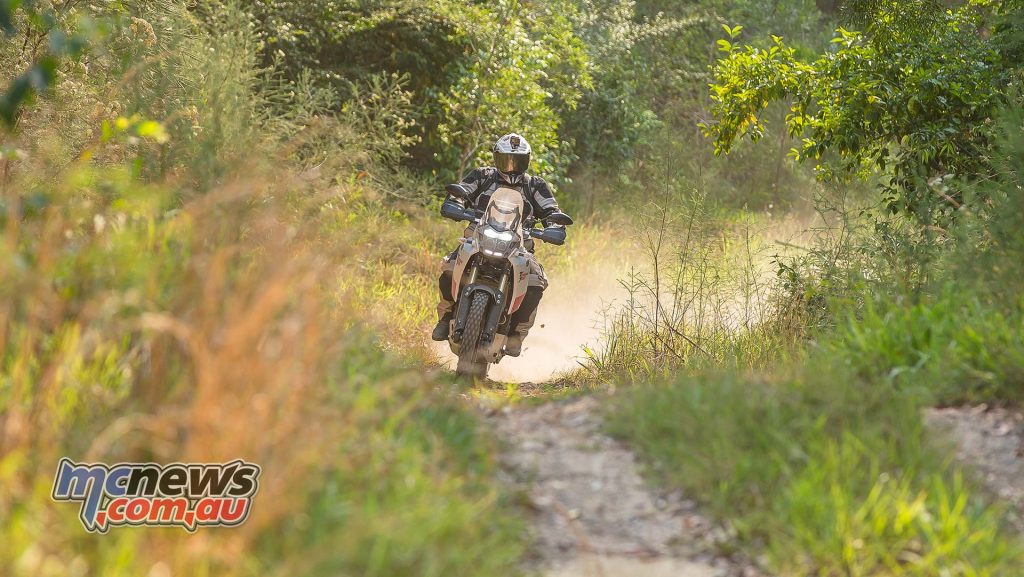
That aberration aside the Tenere 700 is a great piece of kit and looks set to become Australia’s most popular adventure motorcycle. Its competitive ride away price of $17,149, combined with the solid engineering integrity that Yamaha is famous for, will ensure that success.
Would Yamaha get my money in the present market?
I think they might. I reckon it would prove bullet-proof while being easy to maintain and cheap to service.The XT700 is also lighter, more agile and better suspended than most in this class. I might miss the grunt of the bigger options out there while playing silly buggers, but that value equation keeps coming back to front of mind and might win me over when it came down to which brand was going to get my coin…
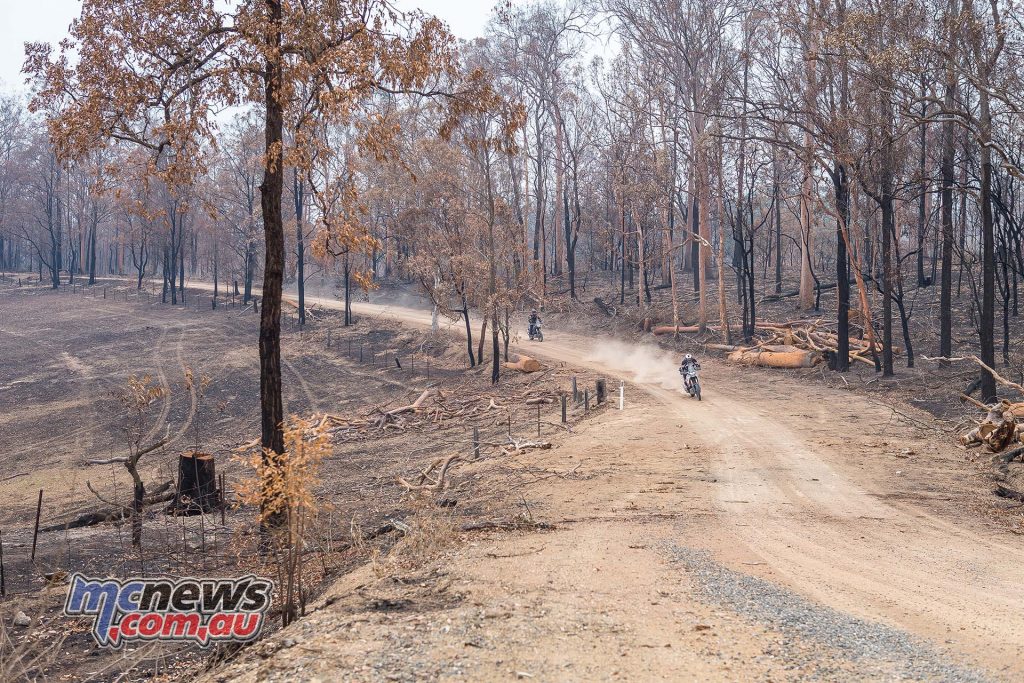
Do I reckon there might be an even more off-road specific Tenere 700 with much longer travel suspension and even more off-road chops?
I think that depends on the success of this model. Check out my interview with project leader Takushiro Shiraishi where I ask him exactly that.
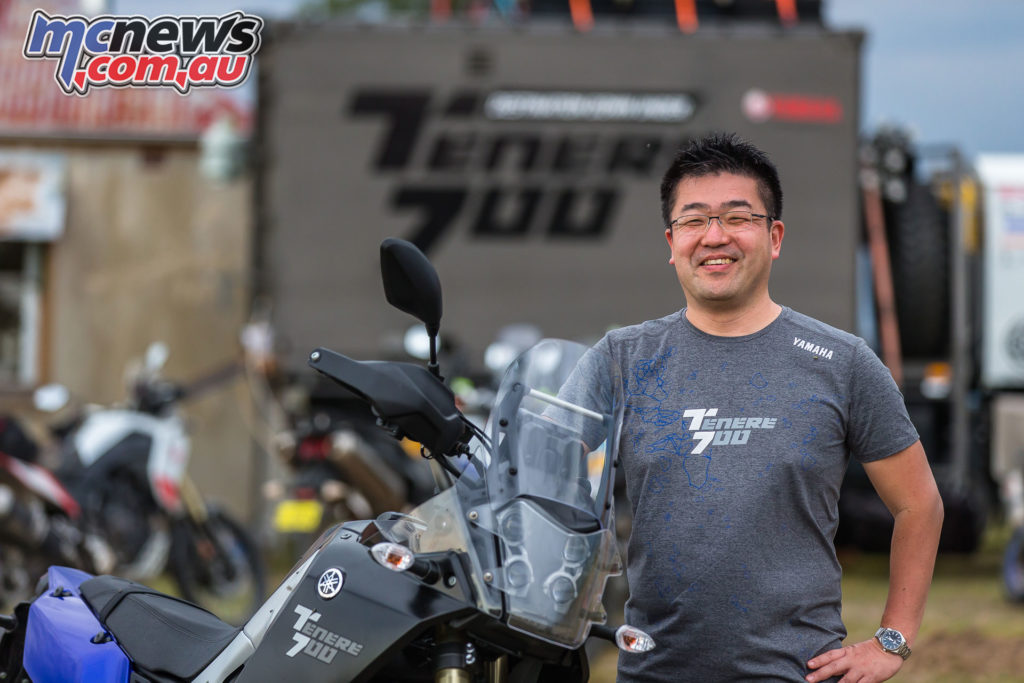
Thanks to Greg Yager and his RideADV crew for looking after us and the bikes during the Tenere 700 launch.
Yamaha Tenere 700 Specifications XT700
| Specifications | |
| Engine Type | 2-Cylinder, 4-stroke, liquid-cooled, DOHC, 4-valves |
| Displacement | 689 cc |
| Bore x Stroke | 80.0 mm x 86.6 mm |
| Compression Ratio | 11.5 : 1 |
| Maximum Power | 74 hp @ 9000 rpm |
| Maximum Torque | 68 Nm @ 6500 rpm |
| Lubrication System | Wet sump |
| Clutch Type | Wet, Multiple Disc |
| Fuel System | Fuel Injection |
| Ignition System | TCI |
| Starter System | Electric |
| Transmission System | Constant mesh 6-speed |
| Final Transmission | Chain |
| Frame | Double cradle steel tube |
| Front Suspension | Telescopic forks, 210 mm travel |
| Rear Suspension | Swingarm – link type suspension, 200 mm travel |
| Front Brake | Hydraulic single disc, 282 mm |
| Rear Brake | Hydraulic single disc, 245 mm |
| Brake System | Switchable ABS |
| Front Tyre | 90/90-21 54V M+S Spoke wheels / Pirelli Scorpion Rally STR |
| Rear Tyre | 150/70-18 70V M+S Spoke wheels / Pirelli Scorpion Rally STR |
| Overall Length | 2365 mm |
| Overall Width | 915 mm |
| Overall Height | 1455 mm |
| Seat Height | 880 mm |
| Wheelbase | 1590 mm |
| Min Ground Clearance | 240 mm |
| Wet Weight | 204 kg (Full tank and all fluids) |
| Fuel Tank Capacity | 16 L |
| Colours | Ceramic Ice, Competition White, Power Black |
| Warranty | Two years, unlimited kilometres |
| Price | $17,149 Ride Away |
